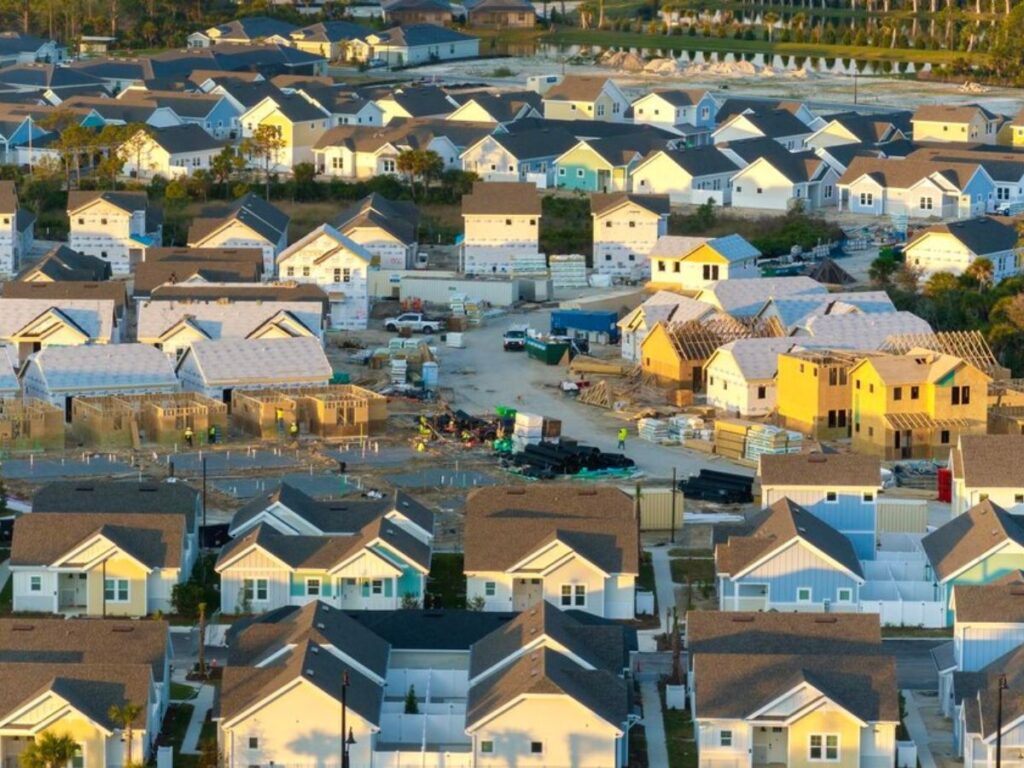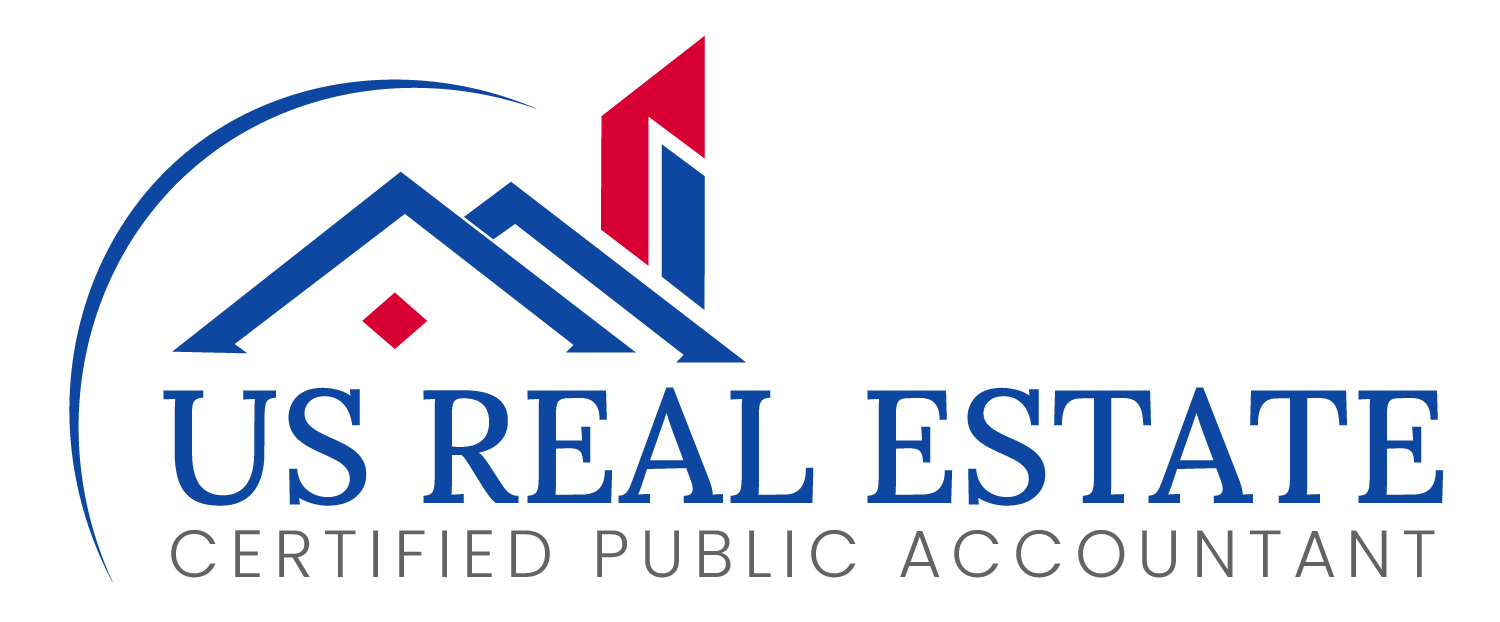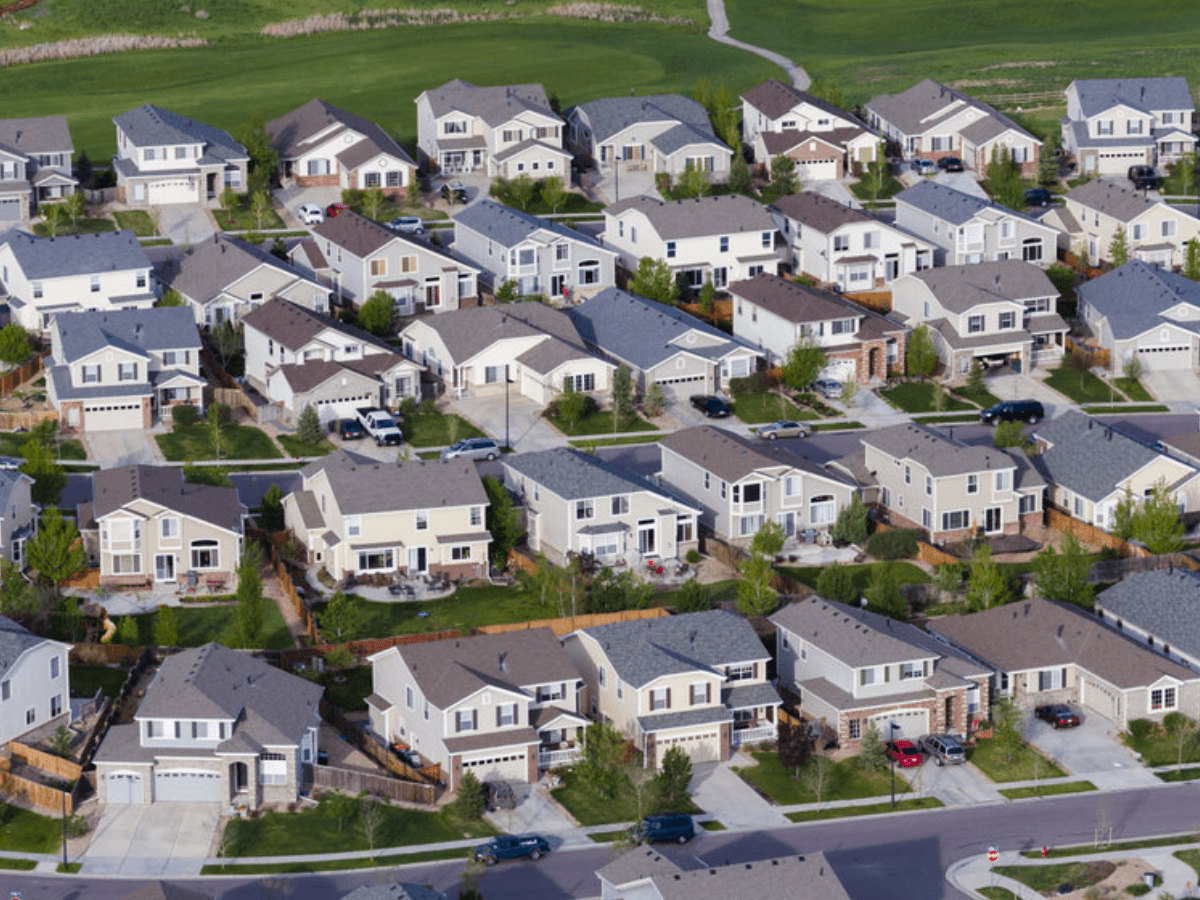
Trump’s “Liberation Day” Is Set to Whack The Housing Market
President Donald Trump stood in the White House Rose Garden on Wednesday and declared a new era for American workers, rolling out aggressive tariffs that he promised would end decades of the U.S. getting “ripped off” by global trade partners.
Yet economists and industry experts warn that consumers—more so homebuyers—could end up paying the price. Flanked by advisers and industry leaders, Trump announced a minimum 10% tariff on all imports, in addition to steeper rates for countries that tax U.S. goods heavily. Chinese imports will be hit with a punishing 65% total tariff (including existing duties). Canada and Mexico were spared additional tariffs, and the new levies will not be added to industry-specific measures like a 25% tariff on cars.
Trump is doubling down on his “America First” trade war, betting that higher costs for foreign goods will boost U.S. manufacturing. “With today’s action, we are finally going to be able to make America great again, greater than ever before,” Trump declared, calling the move a “Liberation Day” for American workers.
Tariffs are taxes on imports and businesses tend to pass those costs to consumers. That means everything from electronics to appliances to building materials could soon get more pricey.
The White House insists tariffs won’t fuel inflation, pointing to Trump’s first term when tariffs didn’t trigger runaway price hikes. But critics fire back that today’s economy is more fragile as supply chains are still recovering from pandemic disruptions and consumers are already squeezed by high housing costs.
Housing Market in the Crosshairs
For anyone buying a home or planning renovations, the new tariffs could deliver a one-two punch:
1. Mortgage Rates
Global trade wars often send investors scrambling and that could rock mortgage rates. Here’s why:
- If markets panic and stocks drop, investors might flock to bonds, pushing rates down temporarily.
- But if inflation fears grow the Fed could delay rate cuts, keeping borrowing costs elevated.
Rates might swing wildly in the coming weeks. Locking in a rate soon could be a smart move.
2. Home Prices
Building a house? Prepare for sticker shock. Construction relies heavily on imported materials such as lumber, steel, drywall and appliances, which are all now subject to higher tariffs. Even with Canada and Mexico getting lighter treatment, supply chains are so interconnected that price hikes seem inevitable.
And it’s not just materials. Tighter immigration policies mean fewer workers, yanking up labor costs. Builders will likely pass those expenses to buyers, making new homes even pricier in an already unforgiving market.
Trump’s bet is that tariffs will revive U.S. factories, bringing back manufacturing jobs lost to globalization. Some industries, like steel, did see a rebound during his first term. But economists warn that trade wars would backfire were other countries to retaliate. American exporters (like farmers) could suffer.
Moreover, automation means fewer factory jobs exist today than in the 1980s. Even if production returns, it might not deliver the blue-collar boom Trump promises.
The tariffs take effect immediately, leaving businesses little time to adjust. Some industries might stock up on imports before prices shoot up but consumers should still brace for:
- Higher prices on everyday goods
- A choppy housing market including uncertain mortgage rates and costlier new homes
- Possible retaliation from trade partners, risking deeper economic disruption
Trump’s philosophy is that short-term pain will produce long-term gain. But for families already buckling under high costs, “Liberation Day” is no good.
How Home Prices Could Climb
If you’ve been holding out hope that home prices might finally sink in 2025, Trump’s latest round of tariffs could throw another wrench into an already brutal housing market.
The White House frames the new trade policies as a win for American workers, but homebuilders and buyers are staring down a harsh reality: that construction costs are about to climb, which in turn could make new homes even more expensive.

Building a house in America relies on a surprising amount of imported materials—about 10% of all residential construction supplies, reckons the National Association of Home Builders (NAHB). And with the new 10% baseline tariff now (plus even higher rates for some countries), those costs would certainly rise.
The biggest pain points are lumber and drywall. 72% of imported lumber comes from Canada while 74% of gypsum (used in drywall) comes from Mexico. Although Canadian lumber is spared from the 25% tariff, it’s unclear whether the new 10% “reciprocal” rate will apply. If it does, builders could see material costs jump $7,500 to $10,000 per home, according to NAHB estimates.
That might not sound like a lot in a market where the median new home already costs $414,500, but Joel Berner, Senior Economist at Realtor.com®, warns it’s enough to price out many would-be buyers.
“Homebuyers are already stretched thin by high listing prices and mortgage rates, so even this relatively small increase in cost will keep many of them on the sideline,” Berner says.
The U.S. is short nearly 4 million homes, and the only real fix is to build more—more so at lower price points where supply is most scarce. But if tariffs yank up construction costs, builders may shy away from affordable projects, relying instead on higher-end homes where profit margins can absorb the extra expenses. That’s bad news for first-time buyers in light of these:
- Sky-high mortgage rates (loitering near 7%)
- Record home prices (new homes now cost $16,100 more than existing ones)
- A market where competition is ruthless and inventory is tight
Berner estimates that $10,000 of today’s new home price tag is already due to existing tariffs—like the 14.5% duty on Canadian lumber that predates Trump’s second term. If new tariffs pile on, that number could swell. No wonder that builders are stocking up on materials where they can, hoping to dodge the worst of the price hikes. But if tariffs stick, they’ll have two choices:
- Eat the extra costs (and take a hit to profits), or
- Pass them on to buyers.
What is more, new tariffs threaten to keep mortgage costs at their painful highs. That means your dream of a 3% mortgage rate might have to stay on ice for now.
The Tax Foundation estimates the average household will pay an extra $1,200 next year. When prices rise across the board, inflation sticks around. That puts the Federal Reserve in a difficult spot. Just when everyone expected rate cuts later this year, stubborn consumer prices could force the central bank to hit pause.
“These tariffs could keep inflation elevated just long enough to spook the Fed,” explains Mark Zandi, chief economist at Moody’s Analytics. “Instead of three rate cuts this year, we might only get one or two—if we’re lucky.”
Mortgage rates have been stuck above 6.6% since last October, ignoring Trump’s campaign promise of 3% rates. Here’s why.
- The Bond Market Rules All – Mortgage rates follow the 10-year Treasury yield, which moves on inflation expectations. More inflation = higher yields = pricier mortgages.
- The Fed’s Tightrope Walk – If tariffs keep inflation hot the Fed can’t cut rates as aggressively without risking runaway prices.
- Economic Whiplash – Some economists fear tariffs could slow growth so much they cause a recession. In that scenario, rates would fall but that’s cold comfort if you lose your job.
Trump has floated ideas to directly lower long-term rates like reducing the budget deficit. But with proposed tax cuts possibly adding to the debt, the math isn’t adding up yet.
What Homebuyers Should Watch
Keep your eye on three key indicators in the coming months:
- Monthly inflation reports (especially the core PCE index the Fed watches)
- Fed meeting minutes for hints about rate cut delays
- Construction material prices (early warning of housing cost increases)
The good news is that if tariffs do tip the economy into recession, rates will likely slide. If you’re house hunting, this might be the time to lock in a rate before any new inflation data comes in. Because in this economic climate, the only certainty seems to be uncertainty itself.



